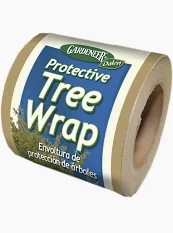
Sunscald affects young trees with thin, smooth bark. It is most common in late winter on the southwest side of the trunk. Exposure to sunlight and warm temperatures during the day heats up the tissues causing them to lose their dormancy. After sunset, when the temperature drops, these cells freeze and die. The result is large, irregular, wounded sections of the bark on this side of the trunk.
Frost cracks are long splits in the trunk or stems. They are caused by old wounds and drastic changes in temperature heating and cooling the outer and inner layers of bark at different rates.
Tree wraps can be used during the winter to protect young trees from weather-related injury. Wraps can be purchased for this purpose and should be light-colored with some elasticity. The trunk should be wrapped starting at the base of the tree upward and stopping just below the lowest branches. This is only seasonal protection for trees during their first few years of establishment. Remove the wrap in the spring and never staple the wrap onto the trunk.
Cynthia Domenghini, Kansas State University Instructor & Horticulture Extension Specialist
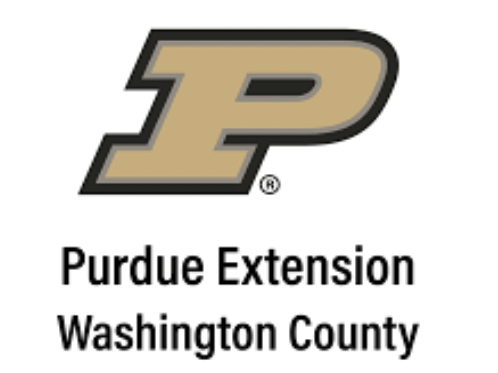
The US Department of Agriculture (USDA) has updated specific federal traceability requirements for electronic identification (EID) in cattle and bison, effective November 5, 2024. Under the updated federal requirements, all official ear tags applied to cattle and bison must be readable visually and electronically when used for interstate movement. The Indiana Board of Animal Health has provided answers for common questions. A few are listed below.
Q. To what species does this change apply?
A. This change only applies to cattle and bison.
* All sexually intact cattle and bison 18 months of age or older.
* All dairy cattle as defined by 9 CFR 86.1 of any age.
* Cattle and bison of any age used by rodeo, exhibition, or recreational events.
Q. What cattle and bison are exempted from the official EID requirement?
A. Official ID is not required for cattle and bison during the following movements: directly to slaughter; as part of a commuter herd agreement; or directly to an approved tagging site, such as a livestock market.
Q. Can I continue to use the visual-only official ID tags I have on-hand for my cattle or bison herd (840s, metal NUES, etc.)?
A. No. Visual-only, non-electronic tags may NOT be used as official ID in cattle or bison after November 5, 2024. Producers are advised to either destroy existing tag inventories or use them in other approved species. NOTE: Visual-only, non-electronic official ear tags will continue to be considered official ID in all other species of livestock except cattle and bison.
Q. My cattle or bison have visual-only (non-electronic) official ID tags. Do they need to be retagged?
A. No. Visual-only official ID applied before November 5, 2024 will be recognized as official ID for the life of the animal; however, all new official ID tags, including retags, applied to cattle and bison after November 5, 2024 need to be both visually and electronically readable.
Q. If I add a new visual EID tag to an animal that already has a visual-only official ear tag, which ID needs to be recorded on test charts and movement documents such as a certificate of veterinary inspection (CVI)?
A. All official animal ID numbers must be recorded, including dairy-breed offspring, steers, and spayed heifers.
Q. If I need to retag my animal after it lost an old, non-electronic tag, do I need to follow the updated rule?
A. Yes. The new tag must be an official EID tag.
Q. Can I apply a new EID tag if my animal already has an older, non-electronic ID?
A. Yes. USDA continues to support upgrades in tag technology. Do not remove the old tag. Instead, make a note in your records of both ID numbers along with the date when the new tag was applied and maintain a copy of those records for 5 years.
Q. Can I remove old official ID if I have retagged to meet the new requirements?
A. No. Official ID is intended to provide permanent identification of livestock and may only be removed in limited circumstances, such as a malfunction of the old electronic component, deterioration of the tag, or a infection at the attachment site. The owner must maintain records to correlate the old/removed tag with the new ID number.
Q. Is USDA providing free EID tags during this change?
A. Yes. USDA is supplying a limited quantity of tags to states for distribution. Indiana's allocation is 61,000 tags. USDA will be shipping EID tags directly to 15 Indiana livestock market facilities based on officially reported past sale volumes of cattle. At this time, logistics prevent shipping smaller quantities to individual producers. Tags are not available through BOAH. Tags continue to be available for purchase from suppliers.
Q. Are backtags still an option for use in slaughter channels?
A. Yes. USDA-approved backtags may be used at markets only for direct-to-slaughter cattle and bison that are slaughtered within 3 days of their movement to the slaughter plant.
Q. Does USDA still offer an exemption for direct-to-slaughter cattle moving interstate?
A. Yes. Cattle moving directly to a recognized slaughter establishment or to no more than one approved livestock facility, where the cattle are shipped for slaughter within 3 days of arrival, are exempt.
Requirements for interstate movement may be found online at:
http://www.interstatelivestock.com or www.aphis.usda.gov.
Producers, veterinarians and others who need to purchase official EID tags should refer to the online buyer's guide or visit: www.in.gov/boah/traceability-and-premise-id/.
For questions regarding interstate movement of livestock, including shipments to or from an approved livestock facility in Indiana, contact BOAH at (317) 544-2400.
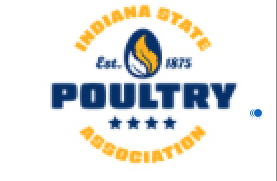
Gov. Eric Holcomb, Indiana State Department of Agriculture Director Don Lamb and the Indiana State Poultry Association recognized the generosity of Indiana’s poultry producers at the 77th annual Governor's Poultry Presentation at the Indiana Statehouse. Over the past year, Indiana poultry farmers and businesses have continued their long practice of working to address food insecurity in the communities within which they operate and across the state.
Through their generosity, Indiana food banks and community organizations were able to offer 250,000 pounds of nutrient-rich duck, turkey and chicken meat to Hoosiers in need. Indiana chicken egg producers supplied food banks with one million dozen eggs, and duck producers donated upwards of 50,000 dozen eggs this year as well. Beyond the donation of poultry and eggs, poultry companies provided in excess of $120,000 in direct contributions to various not-for-profit and charitable organizations in their communities.
"Indiana poultry producers truly embody the generosity of the Hoosier spirit," said Gov. Eric Holcomb. "The members of the Indiana State Poultry Association are committed to feeding the world and their neighbors alike. I want to thank them for their commitment to strengthening Indiana agriculture and for their bountiful donations throughout this past year."
For decades, Indiana’s poultry producers have been working to address food insecurity in local communities by providing protein to food banks across the state. Some of the main products that were donated over the course of this year included eggs, chicken, duck and turkey.
The strength of Indiana’s poultry sector was also recognized during the ceremony as Indiana is one of the top poultry producing states in the country. According to the USDA National Agriculture Statistics Service, Indiana ranks No. 1 in duck production, No. 3 in egg production, No. 4 in turkey production and is home to high quality broiler chicken production as well.
Poultry farming and processing is a substantial economic driver for the state contributing more than $18.34 billion in total economic activity. The sector directly employs 12,792, and it supports an additional 35,719 jobs in allied industries and services across the state according to according to the U.S. Poultry and Egg Association.
ISPA President Becky Joniskan shared, “Protein is such an essential part of a healthy diet, and everyone, regardless of their situation, benefits from having nutritious poultry and egg products on their plate. Indiana’s poultry companies and the many family farms they represent recognize their responsibility to their neighbors, and they are humbled to be able to share the work of their hands with the communities and state they call home.”
The poultry products on display today were donated to Second Helpings, a hunger relief agency, in Indianapolis. This ceremony marks an annual tradition that dates back to the late 1940s. Organized by ISPA, one of the oldest poultry organizations in the nation, it was designed to celebrate the strength and generosity of Indiana’s poultry industry, as well as the annual donations made by its members, who are responsible for more than 95% of the chicken, duck, turkey and eggs produced in Indiana.
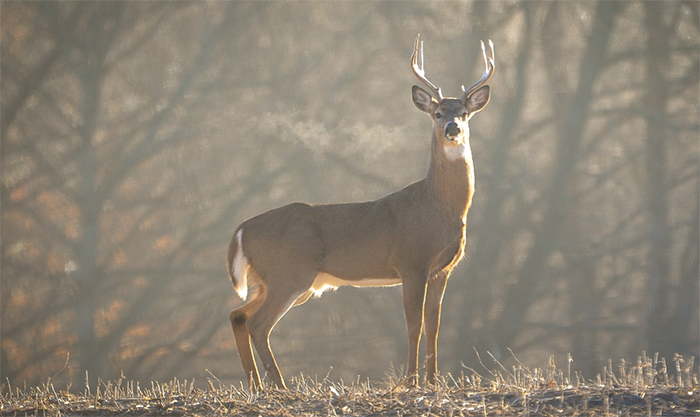
Indiana State Parks
Some Indiana State Parks will be temporarily closed to the public for deer hunts on Dec. 2-3, 2024. The properties will be closed on the evening before the hunt and reopen the morning after. Only individuals selected from the draw may participate at any site.
Participating properties include:
Brown County State Park
Chain O’Lakes State Park
Charlestown State Park
Clifty Falls State Park
Fort Harrison State Park
Harmonie State Park
Lincoln State Park
McCormick’s Creek State Park
O’Bannon Woods State Park
Ouabache State Park
Pokagon State Park and Trine State Recreation Area
Potato Creek State Park
Prophetstown State Park
Raccoon State Recreation Area
Shades State Park
Shakamak State Park
Spring Mill State Park and Cave River Valley Natural Area
Summit Lake State Park
Tippecanoe River State Park
Turkey Run State Park
Versailles State Park
Whitewater Memorial State Park
Deer hunts in Indiana State Parks are carried out to ensure balanced and healthy natural communities and are a necessary management tool that reduces damaging state park deer populations. The hunts manage the impact white-tailed deer have on natural ecosystems, including on rare plants like the Yellow Lady's Slipper. Biologists from the Indiana Department of Natural Resources determine the need for a reduction annually on a park-by-park basis. Reducing deer populations ensures habitat for many sensitive species of flora and fauna protected in our state parks. Information about these hunts can be found at on.IN.gov/reservedhunt.
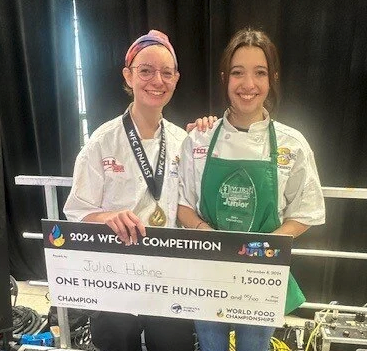
Indiana Pork was a proud sponsor of the 2024 World Food Championships, which took place this month in Indianapolis. Through its sponsorship, Indiana Pork aimed to promote proper cooking temperatures of pork, educate youth competitors about pork, and engage with some of the best-known Indiana chefs in the restaurant and catering industry.
The World Food Championships is an annual culinary event that attracts thousands of competitors and food lovers from around the globe. This sponsorship offered Indiana Pork a unique opportunity to showcase pork as a versatile, delicious, and nutritious protein that enhances any meal, whether prepared in home kitchens or by expert chefs on a competitive stage.
As the sponsor of the Junior Chef competition, each team was provided a pork tenderloin from Indiana Pork and had 90 minutes to prepare a dish using pork tenderloin that captured the essence of "healthy fresh." Contestants were allowed to use other ingredients that they chose but had to supply those ingredients themselves.
Contestants spanned the ages of 9-17 and traveled from all across the country to compete. Indiana teams were well represented during the awards ceremony. Carmel High School senior Julia Hohne and sous chef junior Maddie Arroyo finished first, receiving $1,500 for their pork gorditas. Brownsburg junior Claire Siglar and sous chef Mooresville junior Elizabeth Starr took third place and received $400.
Matt Paschen, Cass County pig farmer and chair of the Indiana Pork promotions committee, shared the organization’s excitement about participating in the event. “We’re thrilled to support an event like the World Food Championships, which aligns perfectly with our mission to elevate the profile of pork in the culinary world. By connecting directly with chefs, influencers, junior chefs, and consumers, we were able to highlight how pork provides flavor, nutrition, and creativity in cooking.”
The World Food Championships is recognized for its high-energy atmosphere and for the first time, was held in Indiana at the Indiana State Fairgrounds Indiana Pork’s sponsorship included multiple cooking demonstrations by local chefs, featuring pork loin recipes that were easy to make for an at-home chef.
By sponsoring the World Food Championships, Indiana Pork continues its efforts to promote the exceptional taste and value of pork to a broader audience while supporting chefs who create amazing dishes for their restaurant attendees.
For more information about Indiana Pork, please visit www.indianapork.org.
SalemLeader.com
Leader Publishing Company of Salem, Inc.
P.O. Box 506
117-119 East Walnut Street
Salem, Indiana. 47167
Phone: 812-883-3281 | Fax: 812-883-4446
Business Hours:
Mondays through Fridays, 9:00am - 5:00pm
News:
news@salemleader.com
Office:
office@salemleader.com
Publisher:
publisher@salemleader.com
Business
- More Business News
- Go To Guide
- Business Directory
- Auctions
Education
- More Education News
Opinion
- Editorials
- Letters to the Editor
- Columns
- Unsung Heroes
- Days Gone By
- In the Garden
- Guest Columns
- Reader's Poll
- Salem Leader Forum
- Questions and Answers
Church
- Bible Aerobics
- Church News
- Church Directory


